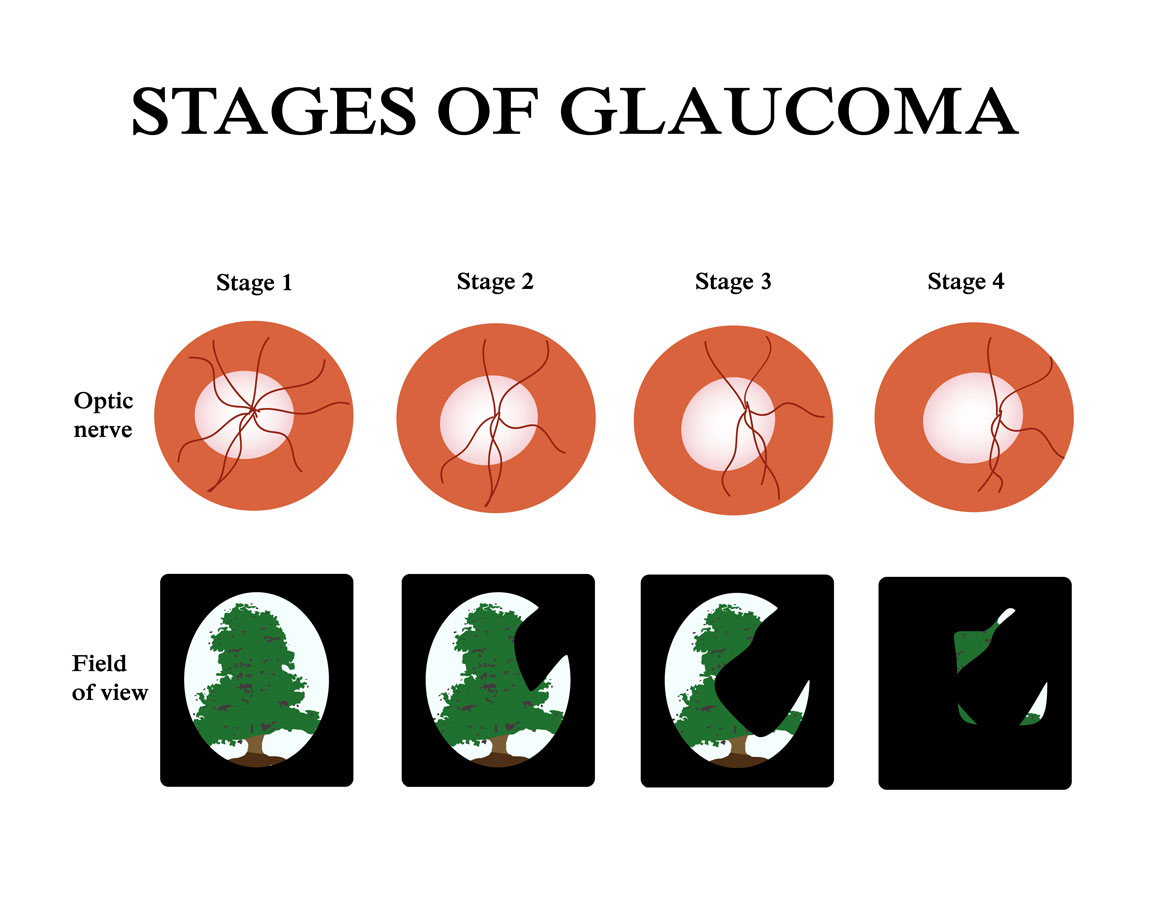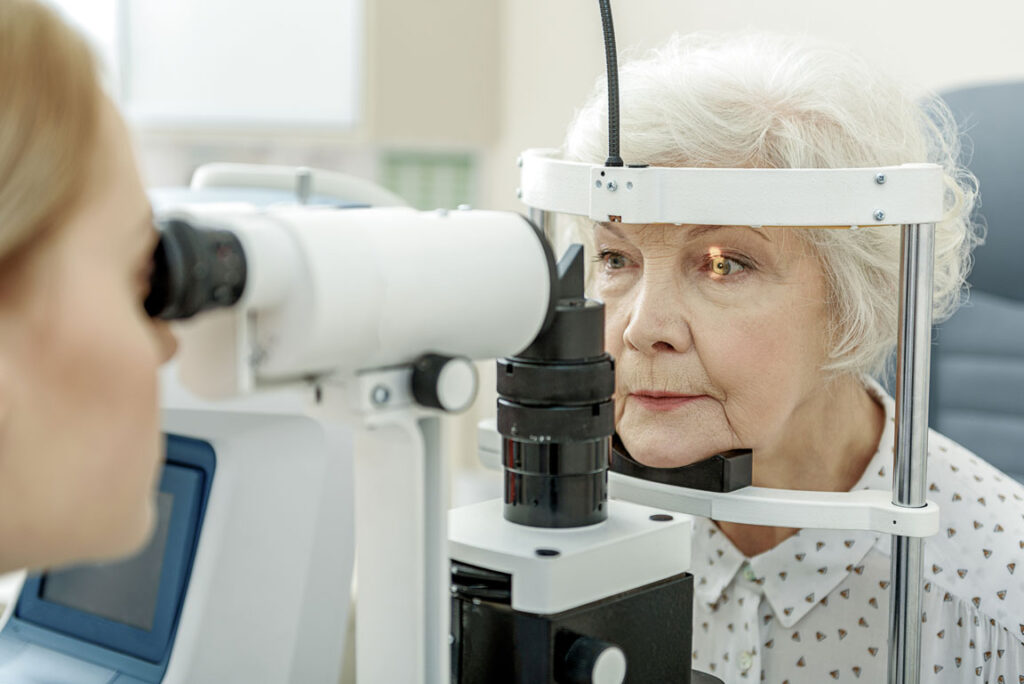As the leading cause of blindness and vision loss in the US, glaucoma affects more than 3 million Americans. Unfortunately, nearly half of those with glaucoma are unaware they have it. This is an important fact because when glaucoma is caught in its early stages, there are several available treatment options that can help prevent the condition from worsening.
What Are the Symptoms of Glaucoma?
At first, glaucoma doesn’t usually have any symptoms. That’s why half of people with glaucoma don’t even know they have it.
Over time, you may slowly lose vision, usually starting with your side (peripheral) vision — especially the part of your vision that’s closest to your nose. Because it happens so slowly, many people can’t tell that their vision is changing, especially at first.
But as the disease gets worse, you may start to notice that you can’t see things off to the side anymore. Without treatment, glaucoma can eventually cause blindness.

Types of Glaucoma
- Open-angle glaucoma
- Normal-tension glaucoma
- Angle-closure glaucoma
- Congenital glaucoma
- Neovascular glaucoma
- Pigmentary glaucoma
- Exfoliation glaucoma
- Uveitic glaucoma
What’s the Treatment for Glaucoma?
Doctors use a few different types of treatment for glaucoma, including medicines (usually eye drops), laser treatment, and surgery.
If you have glaucoma, it’s important to start treatment right away. While it won’t undo any damage to your vision, treatment can stop it from getting worse.
Medicines. Prescription eye drops are the most common treatment. They lower the pressure in your eye and prevent damage to your optic nerve.
Laser treatment. To lower pressure in your eye, doctors can use lasers to help the fluid drain out of your eye. It’s a simple procedure that your doctor can do in the office.
Surgery. If medicines and laser treatment don’t work, your doctor might suggest surgery. There are several different types of surgery that can help the fluid drain out of your eye.
Talk over your options with your doctor. While glaucoma is a serious disease, treatment works well. Remember these tips:
- If your doctor prescribes medicine, be sure to take it every day
- Tell your doctor if your treatment causes side effects
- See your doctor for regular check-ups
- If you’re having trouble with everyday activities because of your vision loss, ask your doctor about low vision services or devices that could help
- Encourage family members to get checked for glaucoma, since it can run in families

Am I at Risk for Getting Glaucoma?
While it is possible for anyone to get glaucoma, there are several factors that may put you at a higher risk. Some of these factors are:
- Being over the age of 60
- Having a history of glaucoma within your family
- Being diagnosed with health conditions such as diabetes or high blood pressure
Even if these risk factors do not apply to you, it is a good idea to regularly see an eye doctor for a dilated eye exam. As we previously mentioned, early detection can greatly improve the chances of stopping glaucoma in its tracks.
